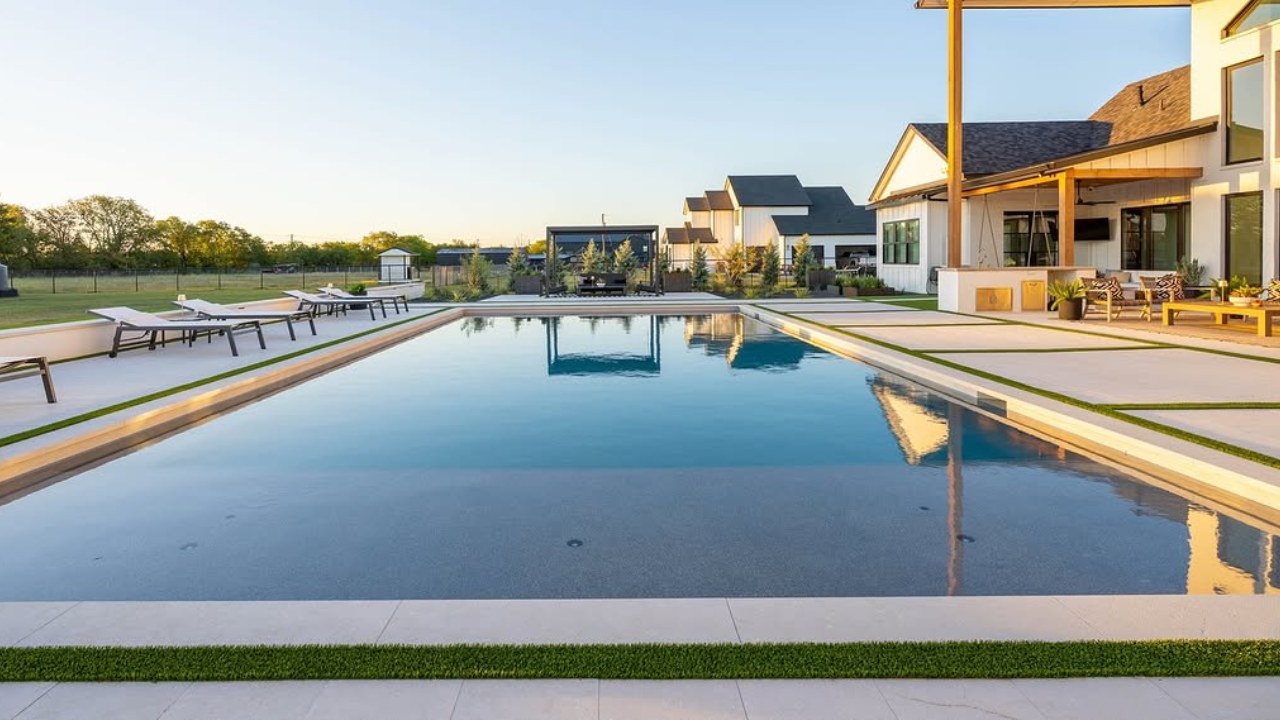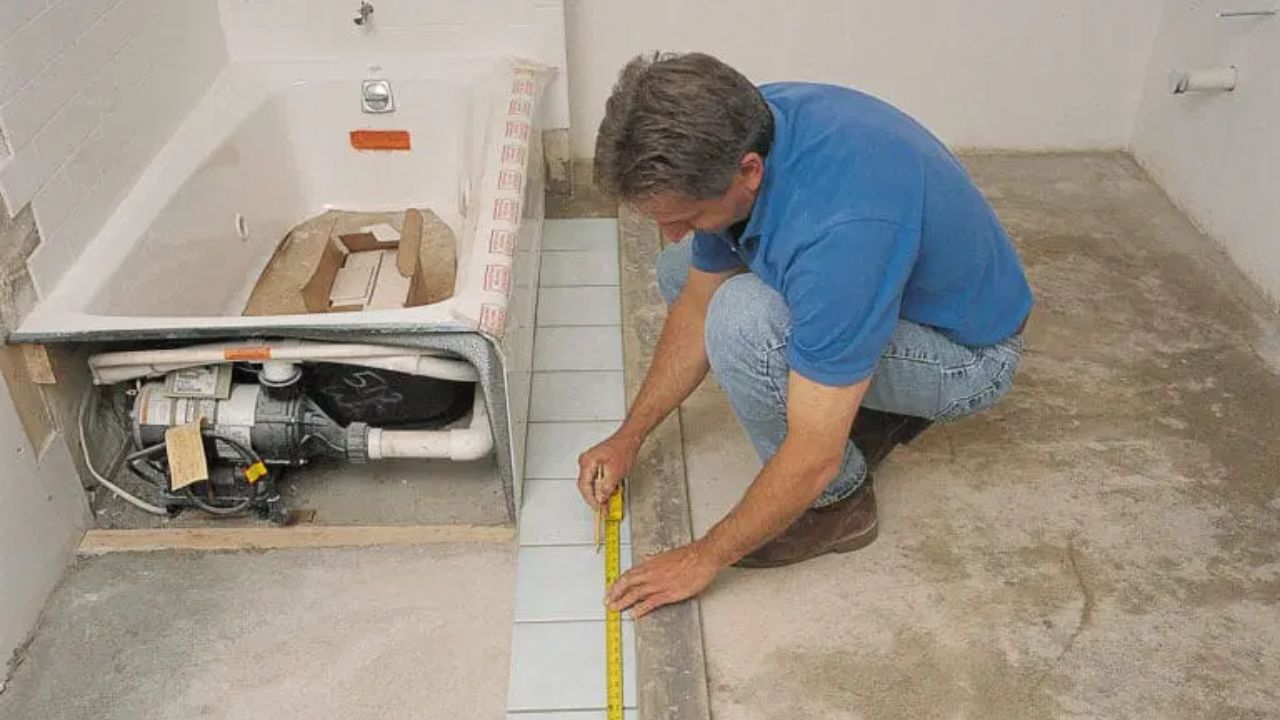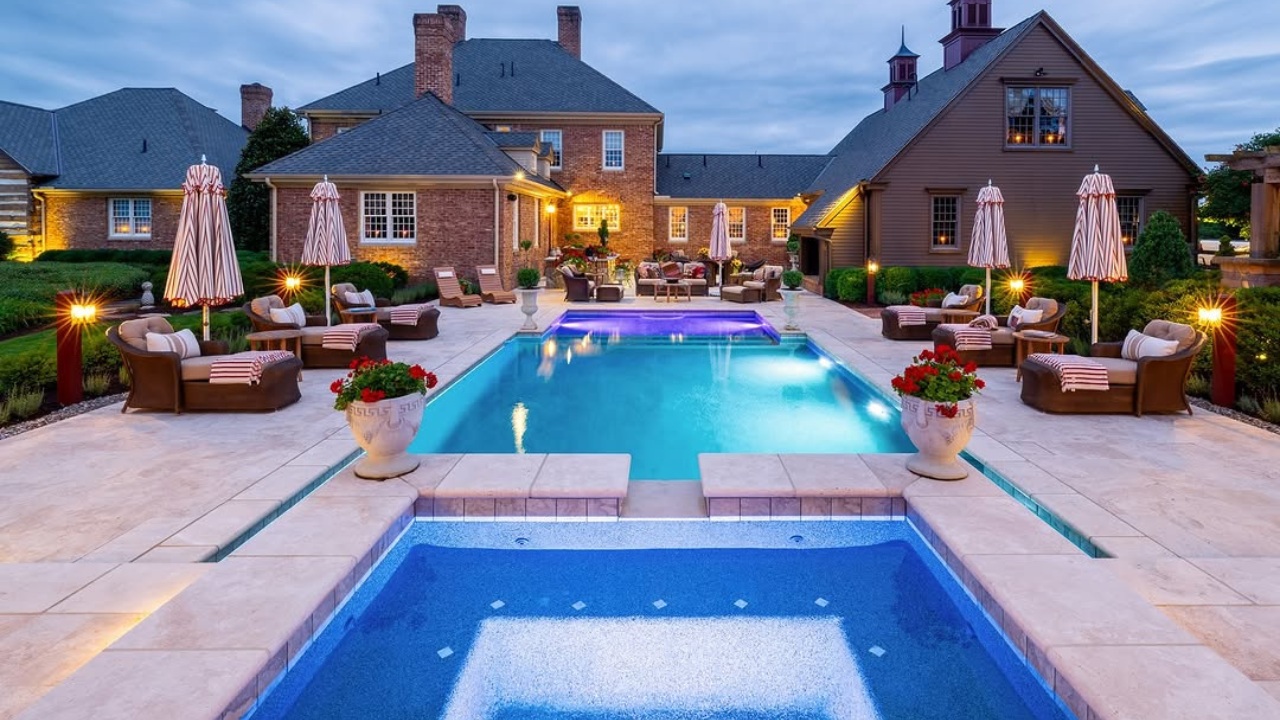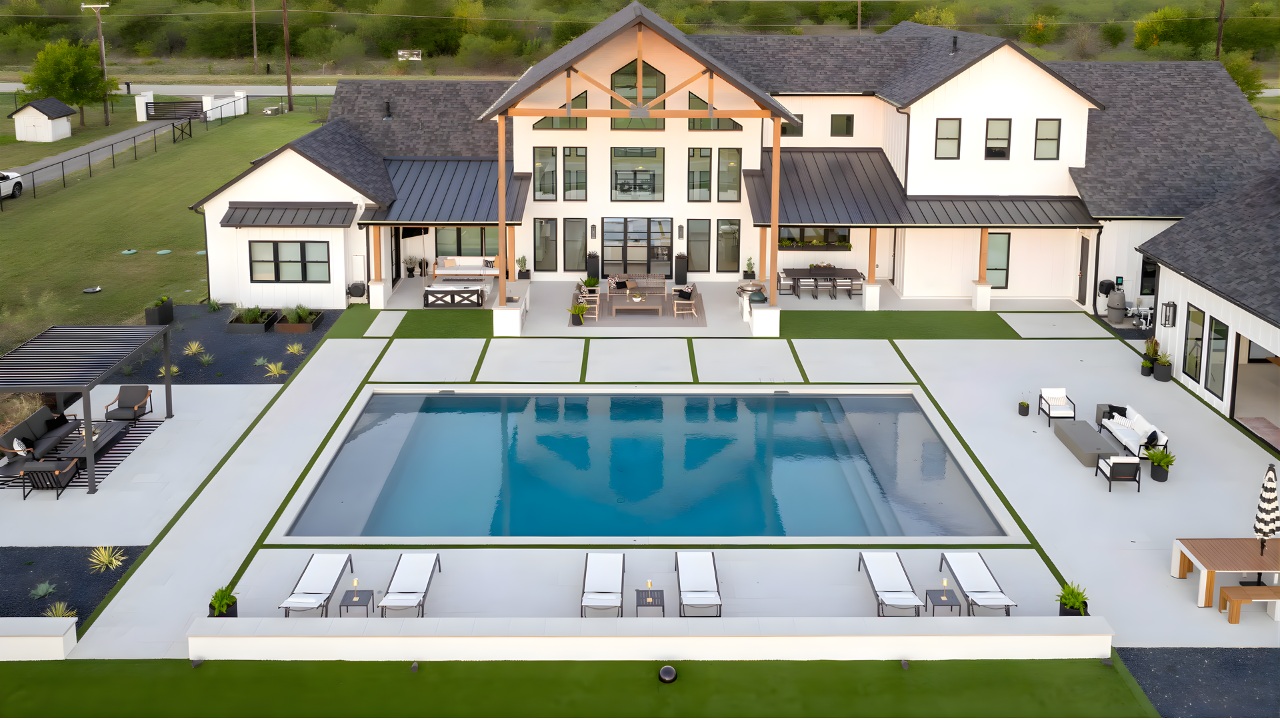When it comes to countertop materials, the two most common and popular materials are Quartzite and marble. Both of these stones offer a luxurious look, stunning colors, and a wide range of finishes. We can see how marble and quartzite are well-suited for indoor floors, walls, and countertops. However, homeowners often want to know the best between Quartzite Vs Marble. Even though these stones look somewhat similar, there are distinct practical differences that you should understand. Knowing the differences can help you make an informed decision. Here is what you need to know.

Quartzite vs Marble: What Are The Key Differences
These types of stone are metamorphic rocks. They are formed under the immense pressure deep within the Earth. However, their origins are much different, and this is why they perform differently when installed.
| Feature | Quartzite | Marble |
| Geological Origin | Metamorphic rock formed from quartz-rich sandstone | Metamorphic rock formed from limestone or dolomite |
| Primary Composition | Quartz (90%+), silica, trace minerals | Calcite, dolomite, and impurities (clay, iron, graphite) |
| Color Range | White, gray, beige, gold, rose, or blue; subtle sparkle | White, gray, green, black, beige; bold veining |
| Veining Pattern | Linear, crystalline, sometimes subtle | Dramatic, flowing, and distinctive |
| Surface Texture | Crystalline and glassy | Smooth and soft |
| Hardness (Mohs Scale) | 7 – hard and scratch-resistant | 3–4 – softer, prone to scratches and etching |
| Porosity | Low to medium – resists stains when sealed | High – absorbs liquids and stains easily |
| Heat Resistance | Excellent – withstands high temperatures | Good – may dull under direct heat |
| Maintenance Needs | Minimal – seal once a year | High – seal frequently and clean immediately after spills |
| Best Uses | Kitchen countertops, flooring, backsplashes, and outdoor kitchens | Bathroom vanities, shower walls, fireplaces, and accent walls |
| Durability | Very durable, ideal for high-traffic spaces | Moderate, better for light-use areas |
| UV Resistance | High – suitable for outdoor use | Moderate – may discolor under sunlight |
| Cost Range | $80–$200 per sq. ft. installed | $70–$250 per sq. ft. installed |
| Maintenance Products | pH-neutral cleaners, penetrating sealer | Stone-safe cleaners, regular resealing |
| Longevity | 25–50 years with minimal care | 20–40 years with consistent maintenance |
| Sustainability | Naturally sourced, long lifespan, low waste | Naturally sourced but more prone to replacement |
| Overall Rating | Best for durability + beauty | Best for aesthetics + luxury |
This table shows a clear difference between Quartzite and Marble. With better durability, lower maintenance, and resilience, quartzite is ideal for rugged use. Marble requires regular maintenance, care, and sealing, not ideal for outdoor applications.
What Is Quartzite?
Quartzite starts as sandstone rich in quartz minerals. With the passage of time, the geological heat and pressure blend the quartz grains into a dense, crystalline surface. This results in a glass-like hard material with superior strength and subtle sparkle.
Quartzite often comes in shades of gray, white, and beige with flowing or veining patterns. It looks like marble but performs like granite. Most homeowners select quartzite because it blends marble-like subtle beauty with real-world durability.
What Is Marble?
Marble forms when limestone undergoes metamorphism. It is a process that re-crystallizes its minerals. This gives marble its soft texture and signature veining. The veins are the result of mineral impurities like iron, clay, and silt. Veins add visual depth and movement.
Marble’s surface feels cool and smooth, which makes it a perfect choice for luxury bathrooms, fireplace surrounds, and statement walls. Marble has a long-lasting beauty, but the surface is more delicate and requires regular care to maintain.
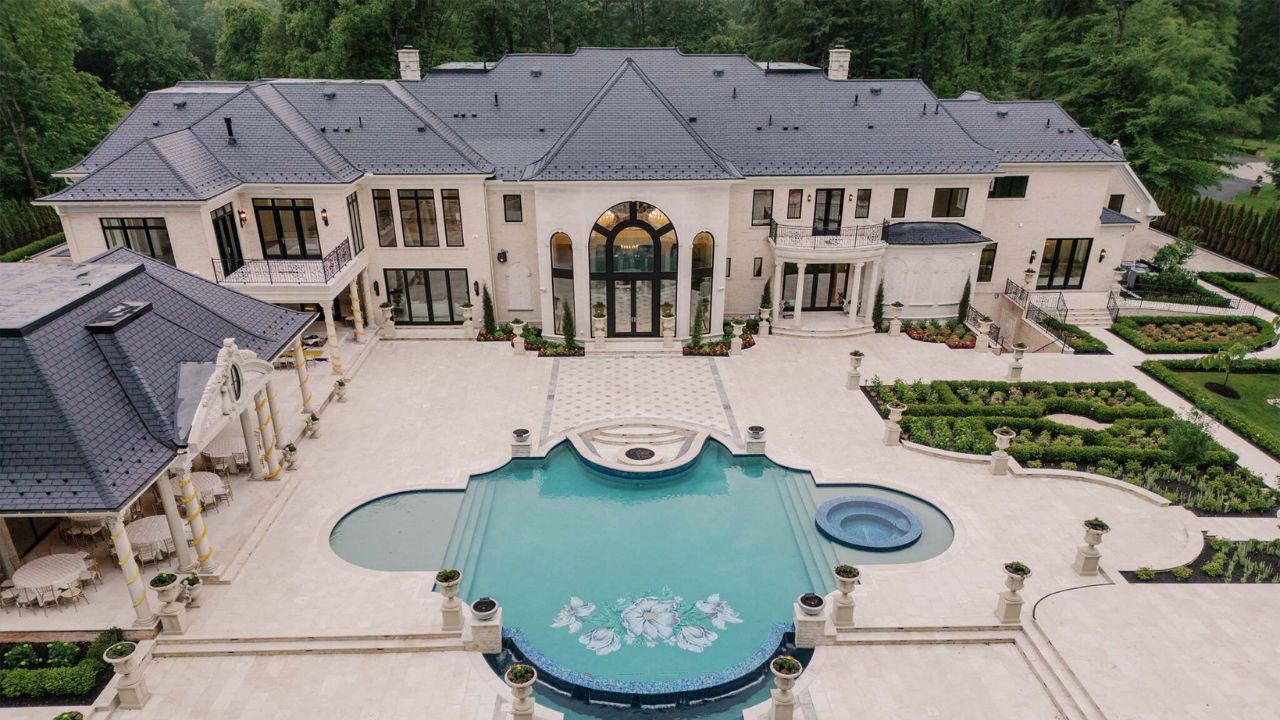
Quartzite Vs Marble: Appearance and Style Differences
In the quartzite vs marble debate, the first factor most people notice is appearance.
Marble has a wide range of distinct veining and soft movement that feels organic and artistic. The natural glow complements both classic and contemporary interiors. Every marble slab looks different with distinct colors and patterns, such as White Marble Pavers, Rain Cloud Marble Pavers, Pietra Gray Marble Pavers, Blue Marble Pavers, and Cream Marble. This is why architects still specify marble for a luxurious look, unique veining, and most high-end projects.
Quartzite, on the other hand, offers a cleaner, crystalline aesthetic. Many varieties, such as Taj Mahal Quartzite or White Macaubas Quartzite, have the appearance of marble but add sparkle and depth. Unlike engineered quartz, each quartzite slab remains natural, unique, and timeless.
In simple words, Marble is ideal for luxurious and classic appeal, while Quartzite offers durability and resilience.
Quartzite Vs Marble: Strength and Durability Differences
When it comes to Quartzite vs Marble, the quartzite is a clear winner. It ranks 7 on the Mohs scale. This resists scratches from knives, metal utensils, and heavy pots. Marble, by contrast, ranks between 3 and 4. This means marble countertops can scratch or etch with acidic exposure.
If you have a busy family kitchen with frequent cooking or outdoor living, quartzite can handle the usage efficiently. This is because quartzite is harder than marble. Marble is well-suited only in low-impact zones such as bathrooms or decorative wall cladding.
For busy households, NT Pavers often recommends quartzite because it offers natural hardness without sacrificing style.
Quartzite Vs Marble: Heat and Stain Resistance
Both stones tolerate moderate heat, but quartzite withstands higher temperatures. Direct heat, like hot pans, curling irons, or sunlight, will not damage its surface. Marble, though, can tolerate heat but may lose its polish or may create dull spots under prolonged exposure.
Comparing quartzite with marble also shows that it resists staining better because of its denser structure. However, sealing both materials will protect them from moisture and oil absorption.
Quartzite Vs Marble: Maintenance and Care
Maintenance is a major factor in marble vs quartzite decisions. Quartzite countertops are relatively low-maintenance, where you can clean them with a pH-neutral stone cleaner and reseal annually.
Marble requires regular care and maintenance. Acidic spills like lemon juice or vinegar can etch its surface, which dulls the shine. Resealing two or three times a year will help preserve its finish, but users must still wipe spills quickly.
In simple words, quartzite is easy to clean and maintain, while marble only retains its beauty with careful maintenance.
Quartzite Vs Marble: Cost and Long-Term Value
When it comes to pricing for both stones, it varies by color, pattern, and origin. Premium marbles like Calacatta Gold can be costlier than quartzite. However, the long-term maintenance and replacement costs often balance out.
These days, quartzite remains a strong investment if you prefer longevity. Marble is well-suited for spaces where visual appeal outweighs wear resistance, like powder rooms or feature walls.
Quartzite Vs Marble: Ideal Applications
Quartzite and Marble both have distinct applications.
Quartzite:
- Kitchen countertops
- Outdoor kitchens
- High-traffic flooring
- Backsplashes
- Pool surrounds
Marble:
- Bathroom vanities
- Shower walls
- Fireplace surrounds
- Accent walls
- Sculpture and decorative art

We recommend Quartzite for both indoor and outdoor design when clients prefer natural stone. It offers better UV and weather resistance, which makes it suitable for exterior cladding and pool decks. Marble struggles to match such performance.
How to Tell Quartzite from Marble?
Quartzite often mimics the look of marble. This often confuses homeowners when deciding between Quartzite and Marble. Here’s how to check:
- Scratch Test:
Quartzite resists a knife scratch, but marble will mark easily.
- Acid Test:
Quartzite performs well against acidic substances, so use lemon juice on the surface. Marble will fizz or etch marble, but leave quartzite untouched.
- Texture:
Quartzite has a more granular and crystalline surface where whereas marble has a smoother and denser surface.
Always verify authenticity before purchase. Contact only reputable Natural Stone Pavers suppliers in Chicago for accurate labeling and quality assurance.
FAQs About Quartzite Vs Marble
Let’s answer your questions about Quartzite and Marble.
Do high-end homes use quartz countertops?
Yes, many high-end homes use Quartz countertops for their consistent appearance, durability, and low maintenance.
What is the best stone for kitchen countertops?
Quartzite is considered the best natural stone for kitchen countertops because of its hardness, heat resistance, and marble-like beauty.
Can I put a hot cup of coffee on my quartz countertop?
Yes. You can put a hot cup of coffee and it won’t damage a quartz countertop, but prolonged heat exposure should still be avoided.
Which is nicer, quartz or quartzite?
Quartzite, because of its organic formation, beauty, personality, and durability, while quartz is a more uniform, engineered stone.
Is quartzite better than marble?
Yes. Quartzite is better than marble for durability, stain resistance, and daily use, but maintaining its aesthetic.
What is cheaper, marble or quartzite?
The common marble variant is cheaper than quartzite. However, some premium and rare marble types can be more costly than several
Can I use Clorox wipes on quartzite?
No. Do not use Clorox wipes on quartzite, as they can damage the sealant. Opt for a pH-neutral stone cleaner instead.
Does quartzite look like marble?
Yes, many quartzite varieties closely resemble marble with natural veining and soft color tones.
Can you use marble outdoors?
No. It is not recommended by experts to use it outdoors because of the marble’s soft surface. It cannot withstand weather changes, UV exposure, and moisture.
Bottom Line
When it comes to Quartzite Vs Marble, both materials perform great in their own distinct way. Quartzite offers great durability, resilience to surface against heat and scratches, while offering stunning looks. Marble is mostly associated with luxurious natural charm.
If you prefer longevity with low maintenance, then quartzite is the best choice for you. If you want stone for low impact, traffic, and a decorative room, then marble is ideal for you. Just make sure to get your stone from a reputable Marble pavers supplier in Massachusetts for the best experience.


